Definition
Kaposi sarcoma abbreviated as KS is a type of tumor that is developed due to an HHV8 (human herpesvirus 8) infection; with another name as Kaposi sarcoma-associated herpes virus or as KS agent.
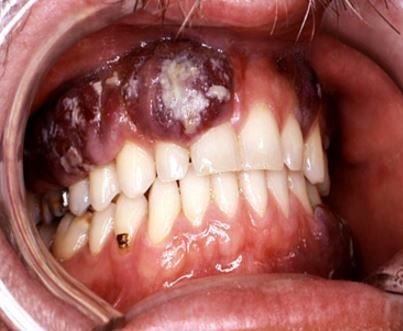
This condition has been linked as one of the defining illnesses of AIDS (acquired immunodeficiency syndrome). It is a systemic viral infection affecting the integumentary system, the mouth and the lymph nodes of an affected person, and has the tendency to affect other organs of the body such as the gastrointestinal (GI) system and the respiratory system.
Symptoms of Kaposi Sarcoma
Kaposi sarcoma as a form of systemic problem presents itself with some noticeable lesions found on the skin that could either be having an internal involvement or in some cases, no involvement at all. The abnormal cells created by KS turns into blotches or tumors of the skin, with colors such as purple, red or brownish lesions, skin nodules or plaques.
The lesions of the skin can be similar to bruises and can occur on the face, the mouth or the legs and which may look bad; however it does not lead to any symptoms. It is the hard palate that is usually aggravated in the mouth and then next to it are the gums, which might cause a problem with eating or speaking. The lesions located on the groin or the legs may end up with painful swelling as KS gets worse.
KS carries a certain degree of varying clinical course, which ranges from a minimal integumentary disease into a greater organ system involvement. The lesions are small and painless at the start, which can turn into ulcers and become painful in the later part. It can be life threatening when the lesions can reach and affect other organ systems like the lymph nodes, lungs, spleen, liver and the gastrointestinal tract.
There are 4 Types of Kaposi Sarcoma:
- AIDS-related Epidemic KS – This affects people infected with the HIV or AIDS, where the tumor rapidly spreads in the skin, lymph nodes, digestive tract, liver, lungs or spleen. It involves homosexuals or men who are bisexual.
- Classic Mediterranean KS – This is a slow-growing tumor of the skin, mostly found among Italian males or those with Eastern European Jewish blood. They may have non-Hodgkin lymphoma at the start before the KS lesions appear.
- African Endemic KS – This occurs specifically among young males in African countries only as a slow-growing skin tumor, which can later on affect the bones and some tissues underneath the skin.
- Iatrogenic Immunosuppressive treatment-related KS – This happens as an effect after an organ transplant of individuals who are prescribed with immunosuppressive medications.
- Specific symptoms of KS when affecting other body organs are as follows:
- Gastrointestinal tract – Nausea and vomiting, weight loss, abdominal pain, blood in the stools or vomitus, malabsorption of ingested food
- Lymph nodes – severe swelling of the face and the legs
- Lungs – shortness of breath or difficulty in breathing, wheezing, hemoptysis, fever, pain in the chest, respiratory failure as it progresses rapidly.
Pathophysiology of Kaposi Sarcoma
Kaposi sarcoma has been considered as a rare disease involving the cells lining the lymphatic system or the blood vessels before AIDS was declared a pandemic problem affecting the human population. KS is mainly caused by a human herpesvirus 8, and is affecting the women eight times more than men.
It may be transmitted through sexual contact or in the saliva of an infected person especially at times when the immune system is being weakened. Transmission by blood borne-route has yet to be proven through research studies.
The complex immune impairment is the main consideration for the pathogenesis of KS, which includes defects in the humoral immunity or cellular immunity, and vascular endothelial growth abnormalities. The overlapping of these contributory factors can lead to the development of malignant KS.
Diagnosis
Attending physicians diagnose KS by assessing and evaluating a person’s skin and removing a sample of tissue from an affected site for biopsy to confirm the diagnosis.
Bronchoscopy is done to visualize the lung passages in the presence of respiratory symptoms. An endoscopy is performed to view the gastrointestinal system for GI symptoms manifested. Patients with HIV infection undergo CD4 lymphocyte counts and viral load studies of plasma HIV.
Treatment
Management of KS can vary according to symptoms being presented by the problem. It can include:
- HAART for active Kaposi Sarcoma and those with HIV/AIDS
- Local treatment to remove the lesions through surgical removal of existing nodules, radiation therapy for classic KS, anticancer drugs injection like Doxil or alpha interferon, Panretin gel application, cryotherapy with liquid nitrogen freezing, electrochemotherapy using electrical impulses to enhance the effect of cisplatin or bleomycin when injected into tumors, and laser therapy using pulsed dye laser
- Systemic chemotherapy for KS reaching internal organs utilizing Oncovin, Doxil, Daunoxome, Taxol, Vepesid, Blenoxane, and Velban.
Prognosis
Kaposi sarcoma has no specific cure and is considered a lifelong condition of a person. The symptoms however can be treated, controlled and can improve with treatment. The chance of recovery is usually affected by the type of KS, patient’s immune system status and whether the cancer has been diagnosed in a patient or has recurred again.
Pictures
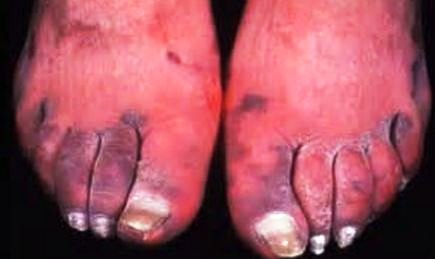
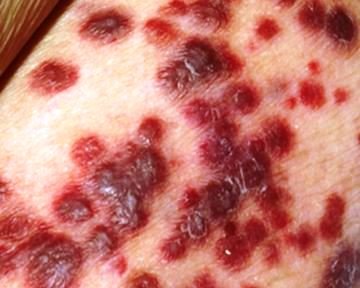
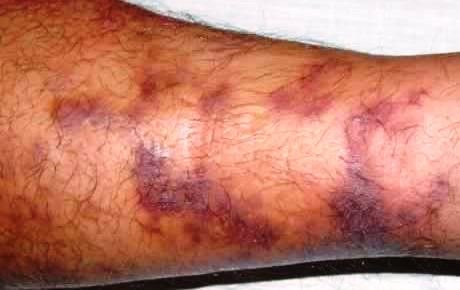
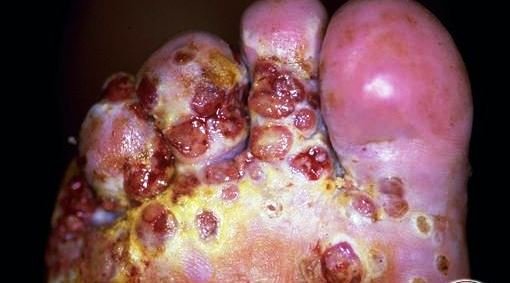
References
- http://www.webmd.com/hiv-aids/guide/aids-hiv-opportunistic-infections-kaposis-sarcoma
- http://emedicine.medscape.com/article/279734-overview#showall
- http://www.cancer.gov/types/soft-tissue-sarcoma/patient/kaposi-treatment-pdq
- DeVita V. AIDS-related malignancies. DeVita V, Vincent T Jr, eds ( 2008). Cancer: Principles and Practice of Clinical Oncology. 5th ed. Philadelphia, Pa: Lippincott, Williams, & Wilkins. Vol 8: 2404-2407.
- Escalon, MP and Hagemeister FB (2006). AIDS-Related Malignancies. Kantarjian HM, Wolff Ra, and Koller CA. MD Anderson Manual of Medical Oncology. McGraw-Hill. 903-910.
- Nawar E, Mbulaiteye SM, Gallant JE, Wohl DA, Ardini M, Hendershot T, et al (2005 Jun 10). Risk factors for Kaposi’s sarcoma among HHV-8 seropositive homosexual men with AIDS. Int J Cancer. 115(2):296-300.
Similar Posts:
- Ewing’s Sarcoma – Prognosis, Survival Rate, Symptoms, Treatment
- Top 40 Cancer Fighting Foods
- Mast Cell Tumor
- Epithelioid Sarcoma
- Lip Cancer
- Clear Cell Sarcoma
- Squamous Cell Carcinoma in Situ – Pictures, Treatment, Symptoms






Leave a Reply